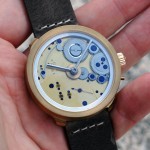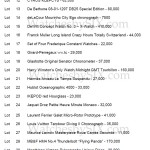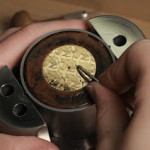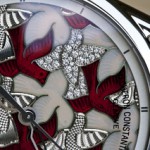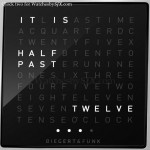The Genius Behind the Most Important English Watch of Modern Times
The George Daniels Space Traveller pocket watch.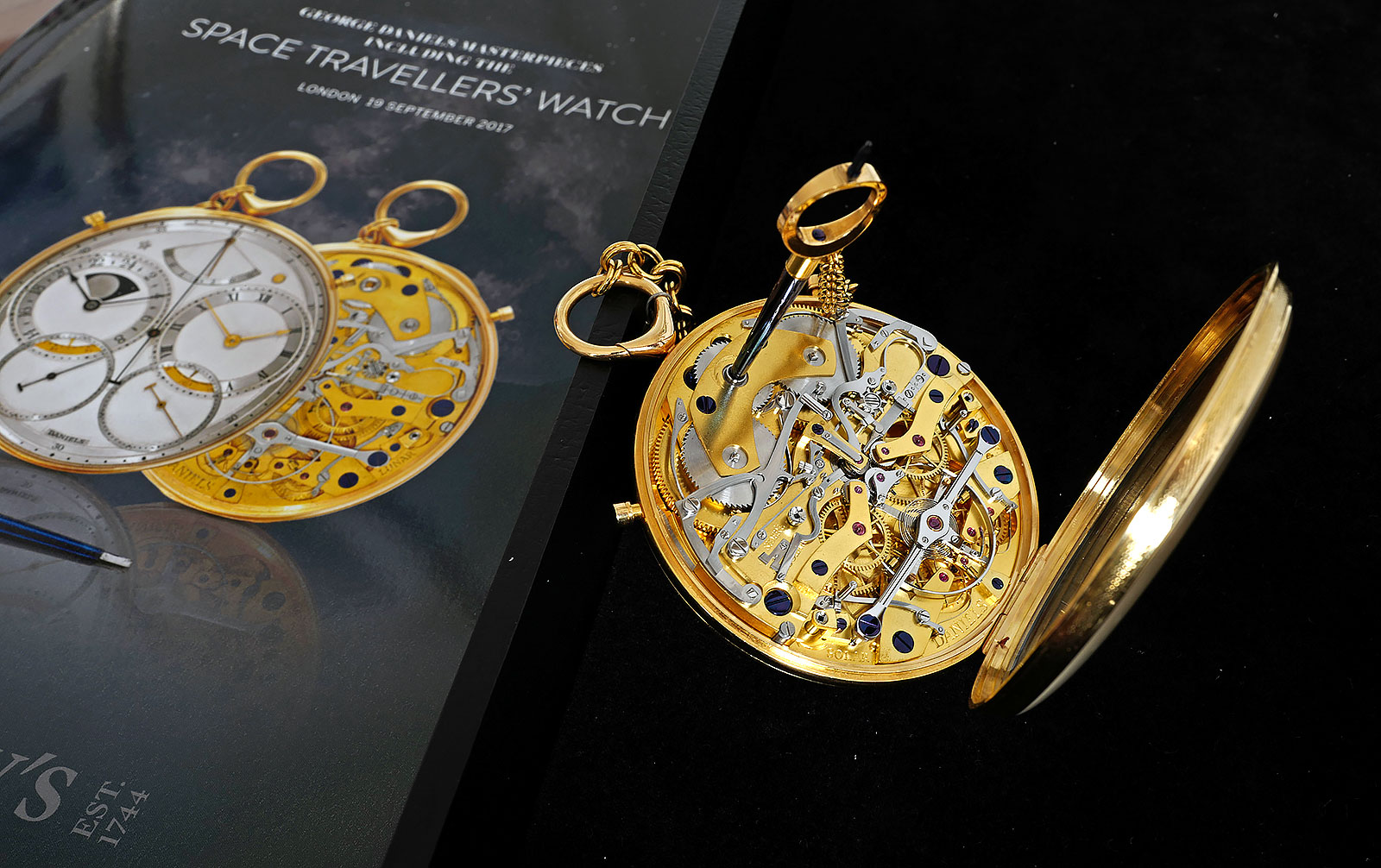
The first time I saw the Space Traveller II watch it was on George Daniels‘ desk at his home, Riversdale, on the Isle of Man. George had made it for himself, calling it his “dress watch”, and kept it with him until his death.
For someone who had worked on historic clocks by some of the greats in horology, from Breguet to Janvier, that ability to tie up time on Earth and time in space, while keeping the design and manufacturing rubric of the historic clocks themselves was a notable and laudable achievement.
Not only does the Space Traveller II show sidereal and mean solar time together, but it has a chronograph function that can switch between the two. Even with today’s hyperbole-driven watch industry I cannot think of any manufacturer having replicated the complications, or even rendering a similar idea with such finesse. And just think: the Space Traveller II was all designed and made by one man, on his own, with no computer-aided design or no CNC machining – it was just George.
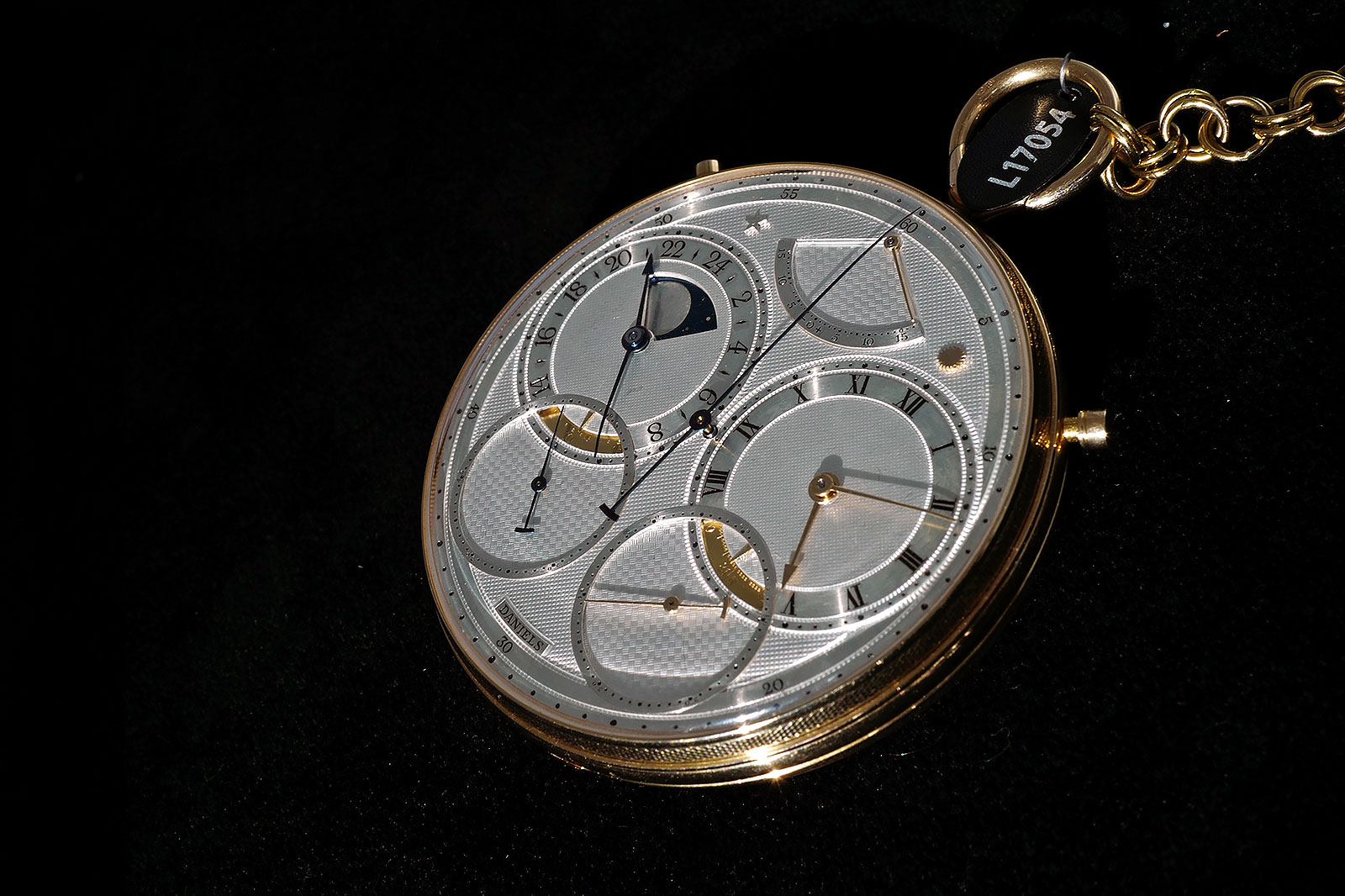
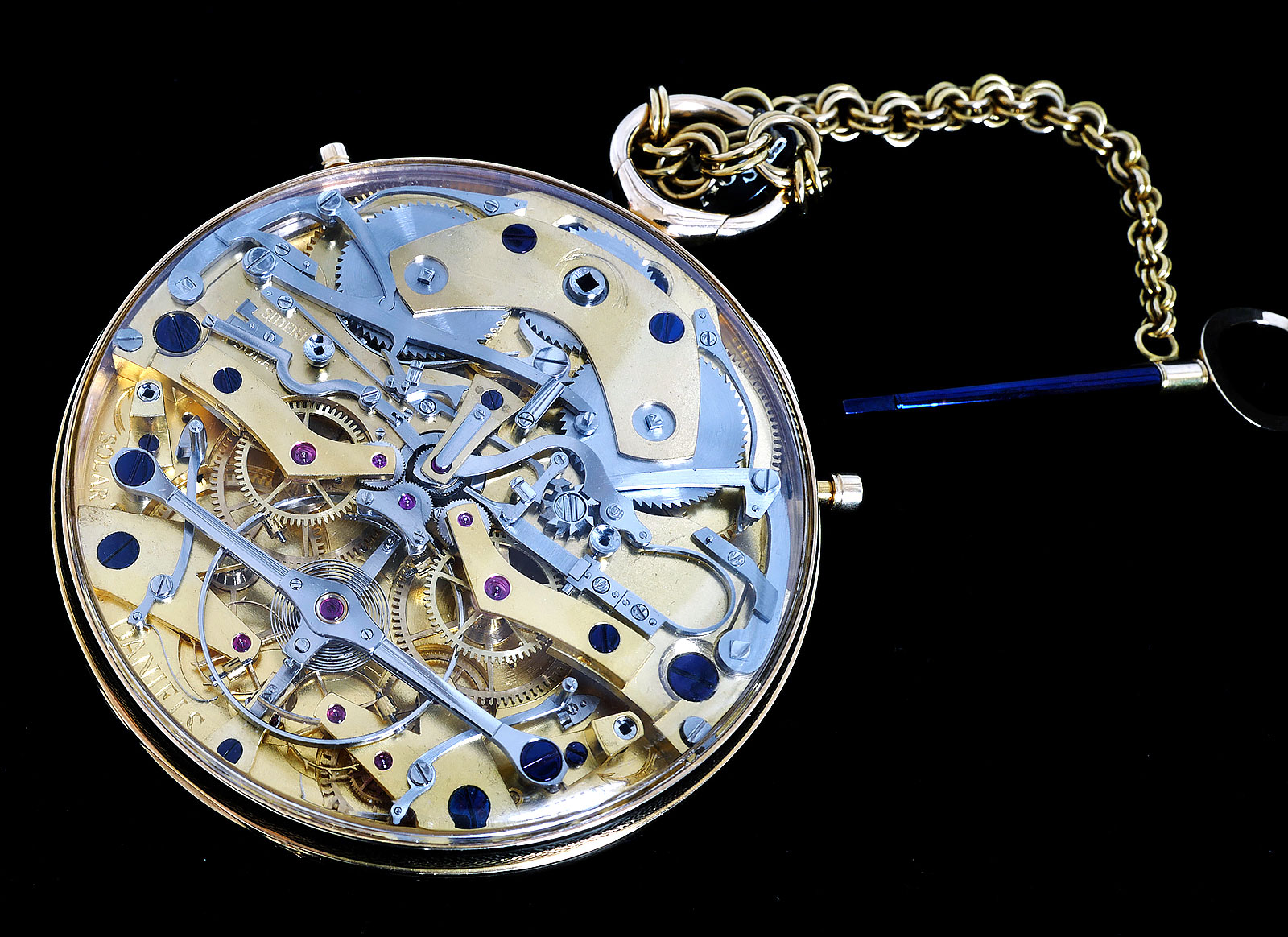
Seller’s regret
The genesis of the Space Traveller lay in the mid 1970s, when George finished a double-escapement pocket watch with two going trains, which he showed to Theodore Beyer, then proprietor of the Zurich watch retailer of the same name. Having been nudged, quite literally, by Beyer, and flattered – George was always pleased that Beyer had not asked the price, instead merely asked if he wanted cash or cheque – into selling the double-escapement watch, George immediately suffered from seller’s remorse. So he set about making another, and doing it better.
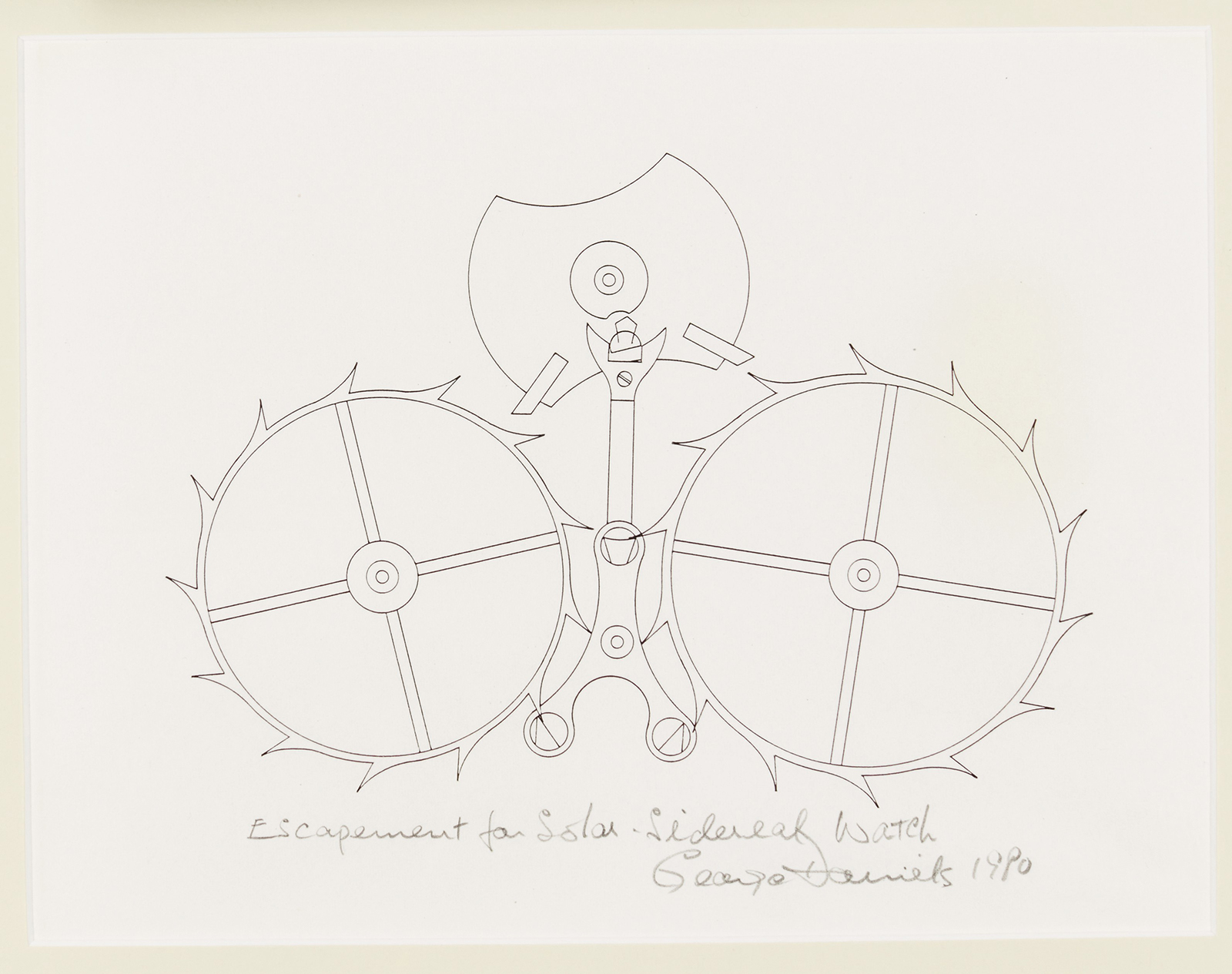
A 1980 sketch showing the twin escape wheels for solar and sidereal time
In thinking about the watch, George realised that he had not fully exploited the twin escapement concept since in the original both trains indicated different time zones in mean solar time. That then led to the first Space Traveller, which was essentially two movements within the same case, but relying on a single balance with two escapements and going trains, one showing sidereal time and the other mean solar time – two different forms of time measurement. It was then sold by London-based antiquarian watch dealer Bobinet in 1982, and then again by Sotheby’s in 1988, after which it has remained hidden.
But then it occurred to George that he could do one better with the two trains and two times, that you could switch between the two with a chronograph function. As with all of Daniels’ watches, the objective was to improve on what had gone before; to develop a new mechanism and test some horological complication. That led to the Space Traveller II – arguably the ultimate Daniels timepiece – which George owned till his death in 2011.
But before either Space Traveller could be completed, there was a problem to surmount – the math. With a certain false modesty George always claimed that he was no good at mathematics. I have to doubt that somewhat. Although he might have wanted some help with the exactitude of the numbers for the ratio between sidereal and mean solar time, it still took a genius mind to take the math and translate that into gears, pinions and levers that tell time.
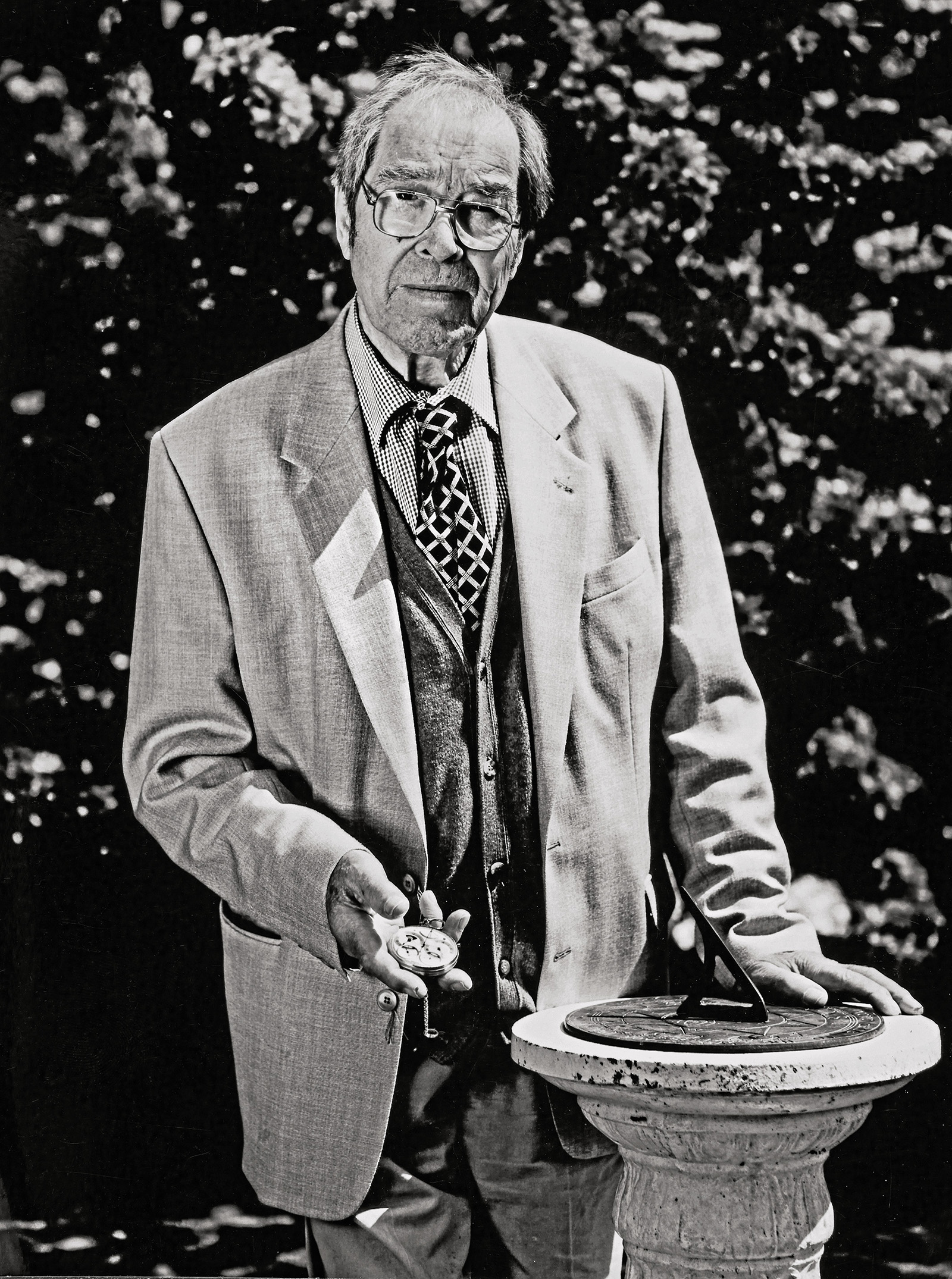
George Daniels holding the Space Traveller II
Another George and another Daniels
The ratio that concerned George was the one between mean solar time and sidereal time – each half of the time display on the Space Traveller. Measured in minutes and seconds it may seem trivial but there was a real purpose to the two definitions of the time needed for a single rotation of the earth on its axis – a day to me and you.
Sidereal time is a time scale that is based on Earth’s rate of rotation measured relative to a fixed star rather than the Sun. From a given observation point, a star found at one location in the sky will be found at the same location on another night at the same moment according to sidereal time. Seafarers would use such measurements for navigation to determine the speed and heading for their course across the oceans.
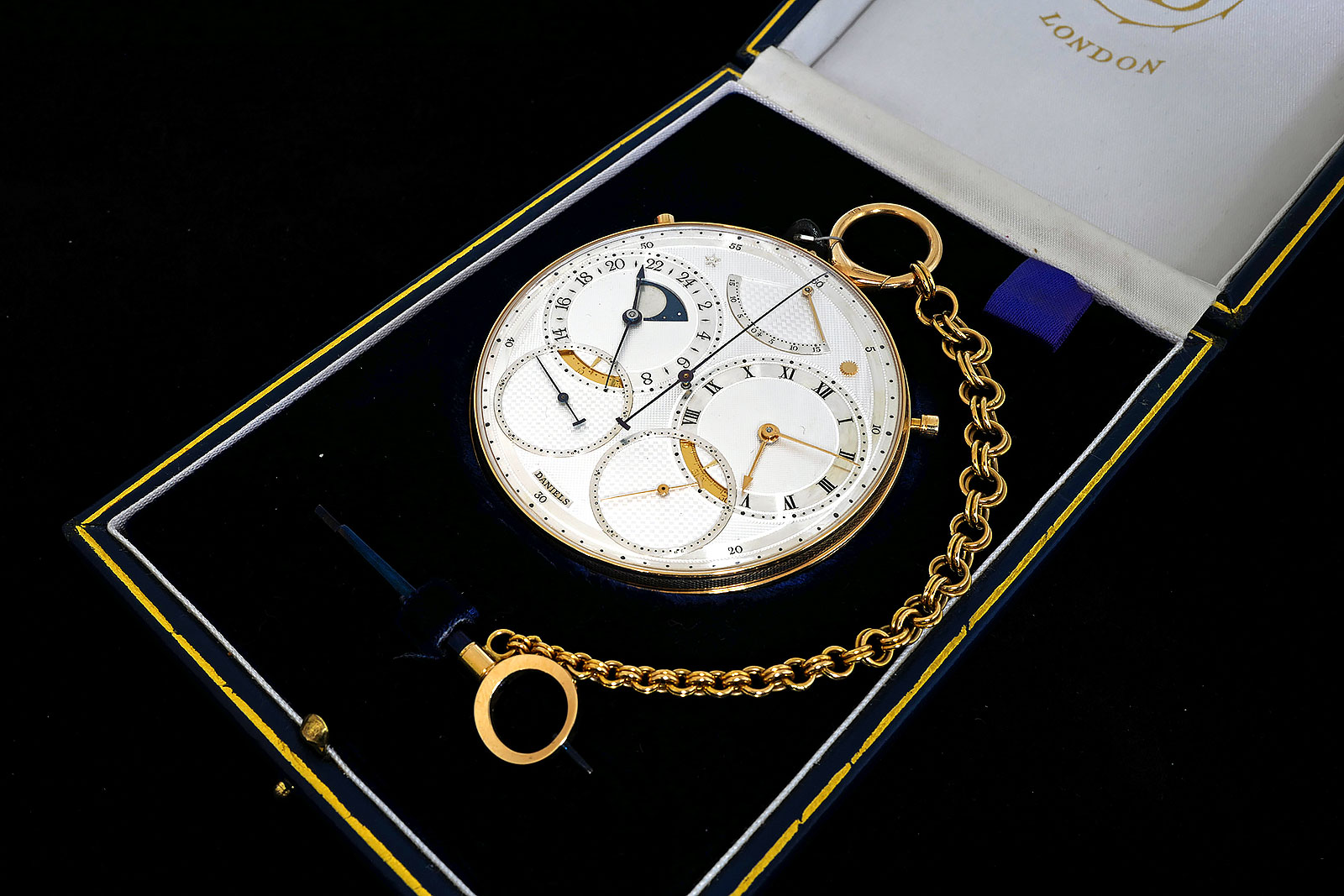
By comparison, mean solar time is the calculation of the passage of time based on the position of the Sun in the sky, where a day is 24 hours throughout the year. If we are standing at noon with the sun overhead, it takes a day in mean solar time for the sun to return to the same position overhead. It is referred to as the mean solar day as the Earth’s orbit around the sun is idiosyncratic, that is, it is not perfectly circular, but rather imperfectly elliptical. Consequently, the mean solar day is a little longer than the sidereal day.
The reason for this is that the Sun is near enough the Earth that as the Earth rotates, it also moves along its orbit far enough that the Earth must actually rotate slightly more than one full revolution in order for the Sun to return to the same overhead position. A sidereal day is 23 hours, 56 minutes, and 4.0916 seconds while a mean solar day is 24 hours. Even in his later years George could recall it to several decimal places and for the record, the ratio of a sidereal to a solar day on average is 1:1.002738.
George’s knowledge of watches that worked off both sidereal and solar time stemmed from his research on 18th century English clockmaker George Margetts’ watches that told both mean and sidereal time (which George published in Antiquarian Horology in 1970), as well as the solution to the Longitude problem. George had worked on the Royal Institution’s Margetts watch and had found it remarkably accurate. Any inaccuracy in the Margetts watch stemmed from the use of the unreliable cylinder escapement, not the calculation of the solar and sidereal time.
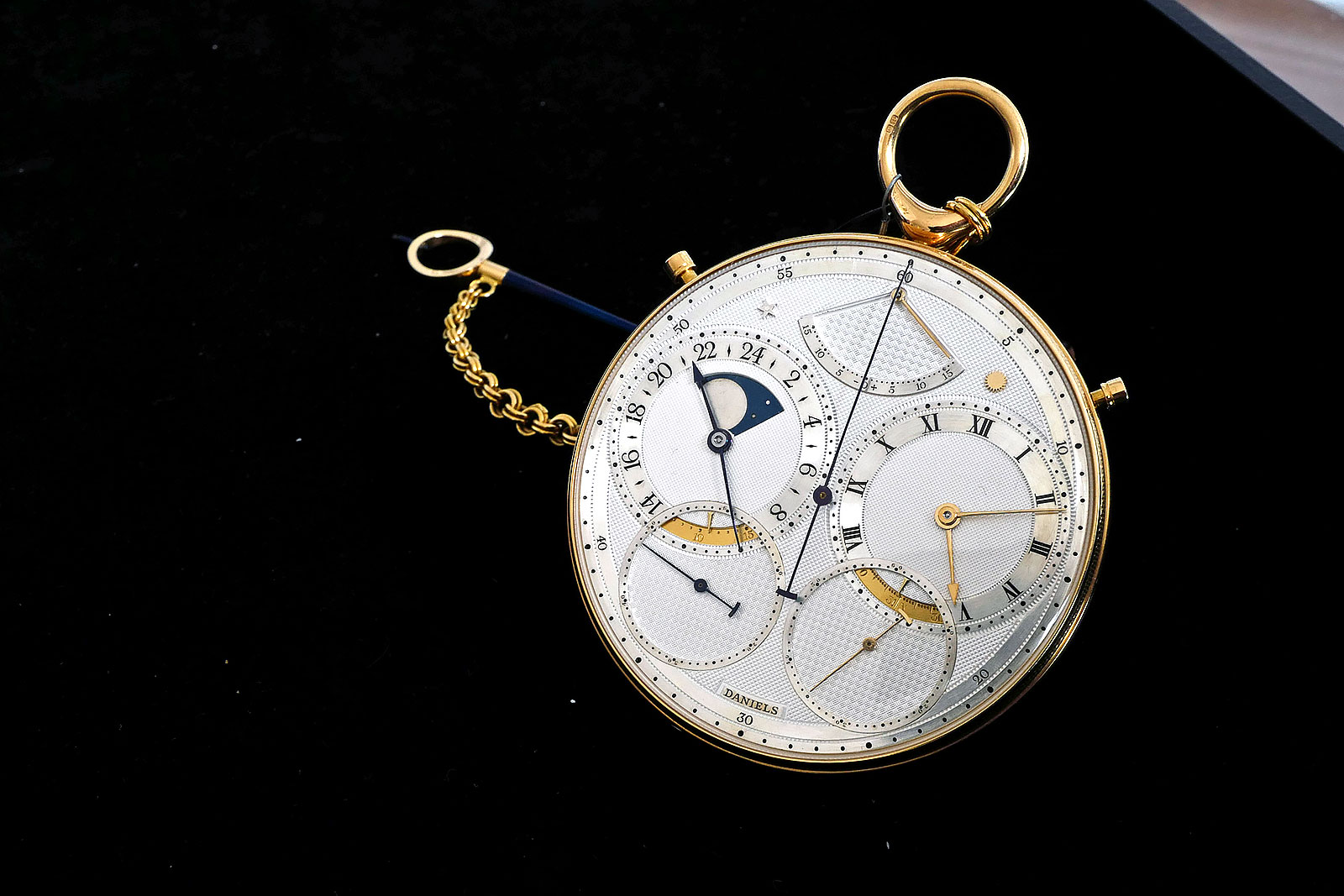
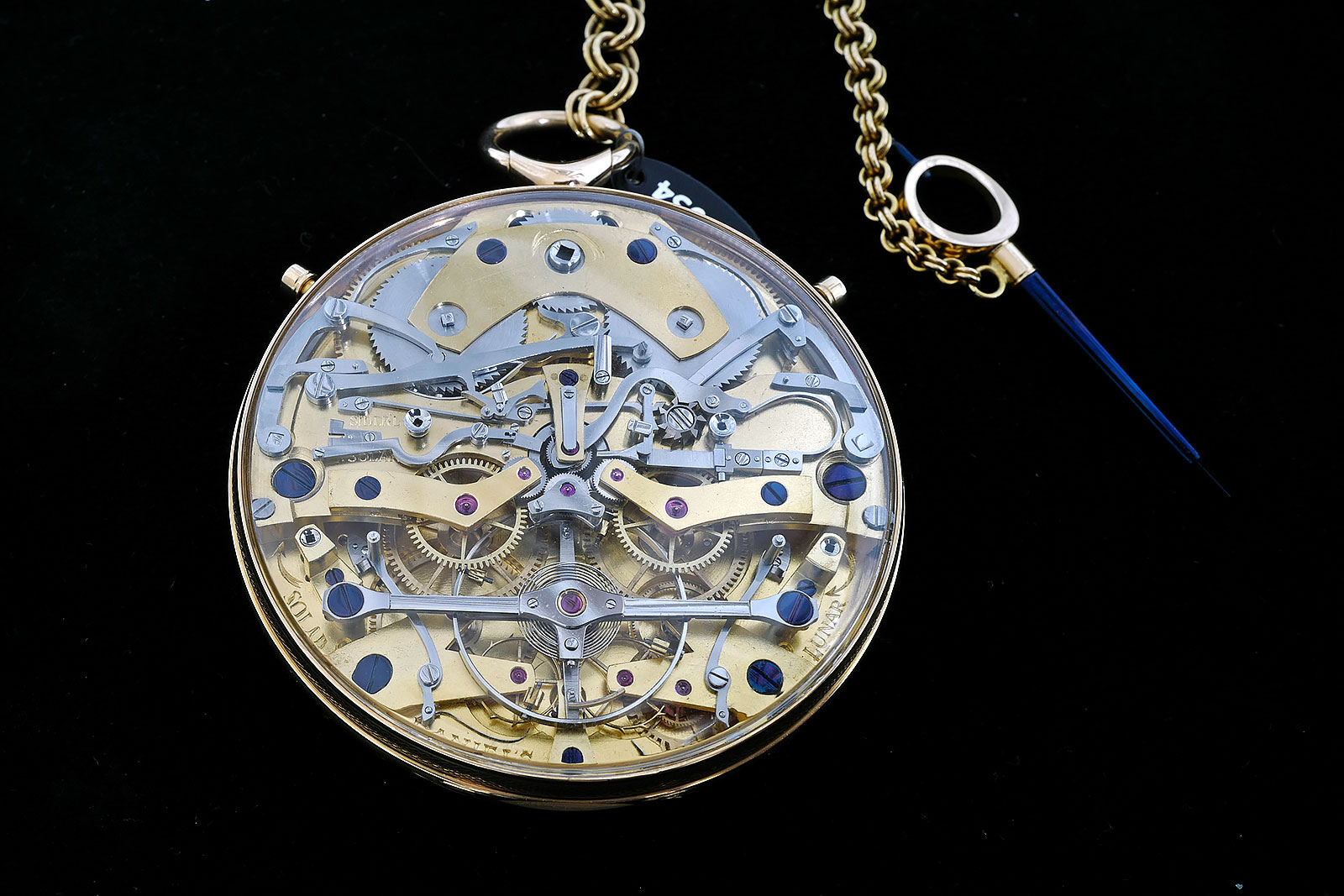
Determining longitude, on the other hand, required an accurate clock that could measure both mean solar time and sidereal time. The latter allowed the observer to measure the time taken to return to the same position relative to a star in the night sky in order to accurately calculate his position at sea. The subsequent adjustment to mean solar time then required a known ratio. But if a watch contained both measures of time then the observer could simply read both the sidereal time and mean solar time displays at the same moment.
In terms of the ratio between mean solar and sidereal time, Margetts’ watch was accurate to within 1.8 seconds a day, and George reckoned with some math he could improve on that. The first Space Traveller watch had increased the accuracy of the ratio to 1.27 seconds. But for the Space Traveller II George wanted a greater degree of accuracy. He managed to get the ratio down to 0.8 seconds but still felt it could be better. So George asked a friend at Cambridge if he knew of any mathematicians who might also know something about watches. Not holding out a great deal of hope, George was astounded to hear back almost immediately that there was someone – and his name was Daniels.
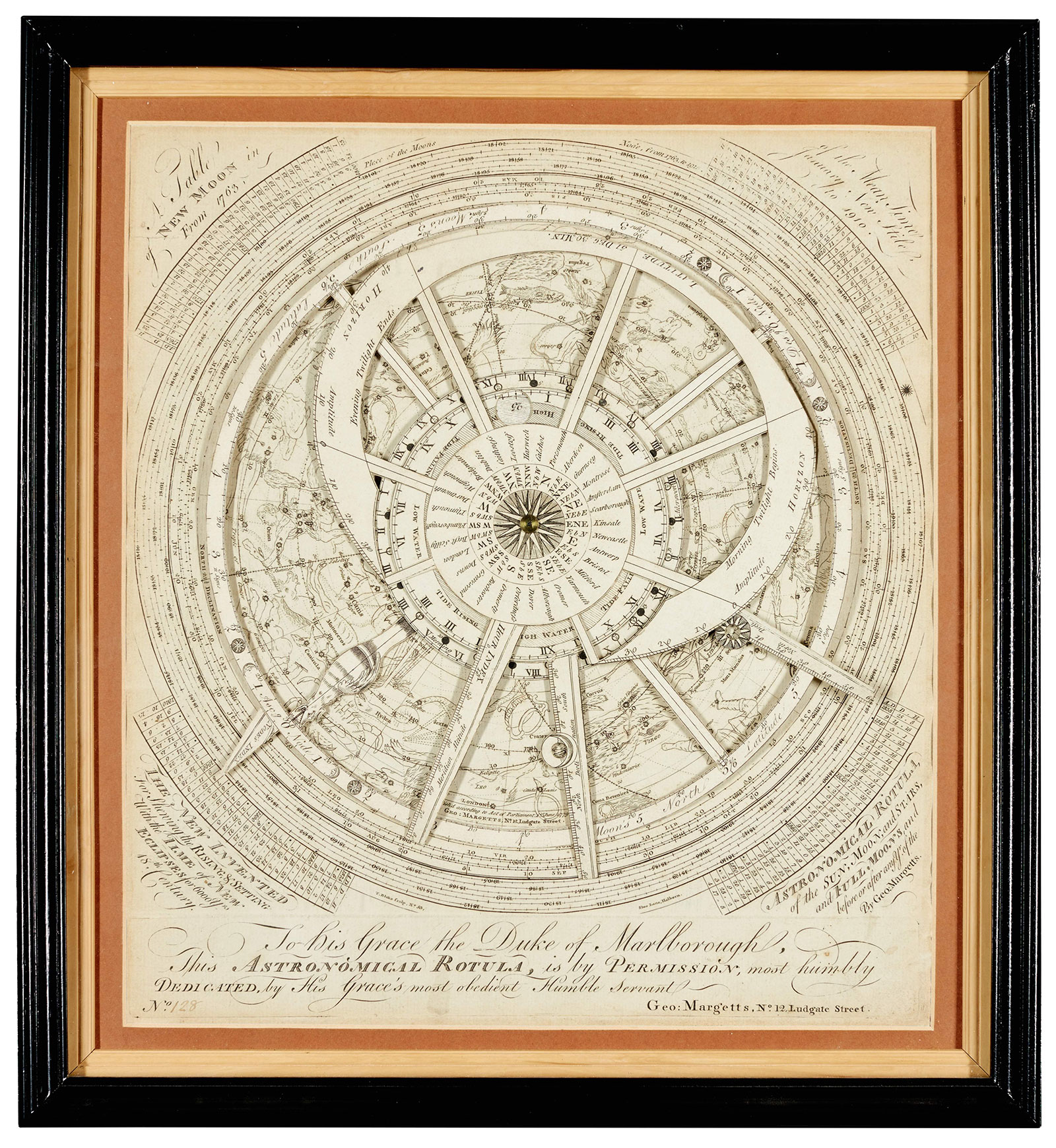
An astronomical rotula created by George Margetts in 1779, made up of layers paper showing “the rising & setting of the sun, moon and stars, with the time of new moon and full moons and eclipses for 6000 years before or after any year of the 18th century”. Photo Sotheby’s
Professor Henry Daniels was a statistician whose seminal work concerned the strength of bundles of threads, and how an individual thread breaking affects the whole, work that later helped develop the field of composite materials. Professor Daniels was also mechanically inclined, having invented equipment for use in his laboratory. According to Professor Sir David Cox, writing after Professor Daniels’ death, the latter was so successful as a watch repairer that the size of his department at university was determined by the number of watches he could service.
When George contacted Professor Daniels, the statistical was essentially retired and living in Cambridge. Professor Daniels used his knowledge of math and time to produce numbers on the ratio that were accurate to within 0.4 seconds per day. Later the number was further improved and George reckoned the accuracy was about 0.28 seconds.
Sir David Cox recalls that Professor Daniels had worked out three different ways of improving accuracy to an ever smaller amount, but George Daniels was happy with the accuracy, realising the limitations of steel and brass. George later remarked in an interview, “The numbers suited me because when you turn these equations into practical manifestations, you’re dealing with gears and there’s a limit to how many gears you can get on a wheel.”
Professor Daniels later became a Liveryman of the Worshipful Company of Clockmakers in 1984 for his work on the Space Traveller watch. And for a spell, the watch was known as Daniels Squared, a nod to the two Daniels involved in its creation, but George later renamed it the Space Traveller with the 1969 moon landing in mind.
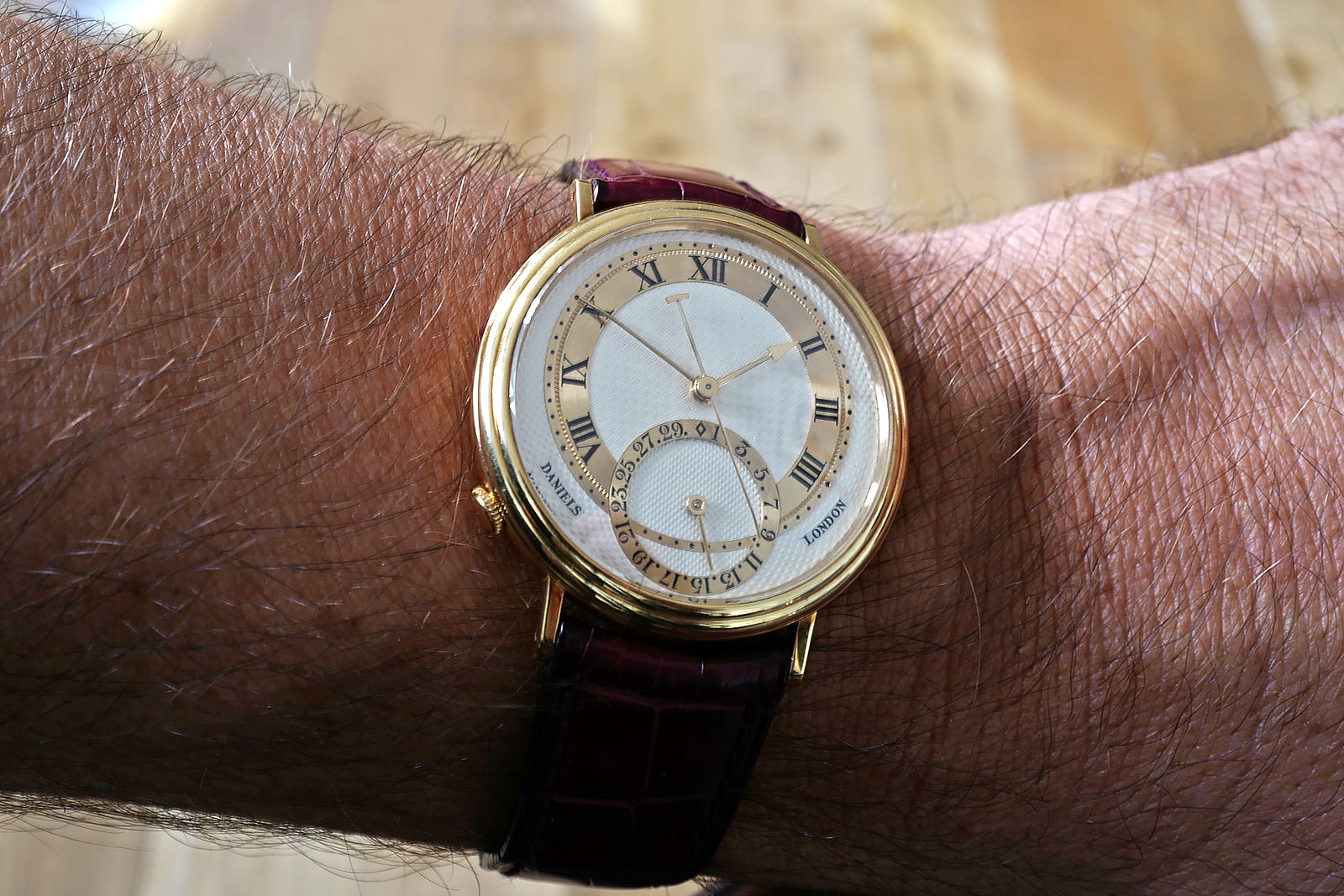
The Daniels Millennium watch, the watchmaker’s “entry-level” creation
Parsimonious complexity
Daniels protege Roger W. Smith, when servicing the watch in 2012 as the watch was being prepared to be sold as part of George’s estate, called it “mind boggling” in its complexity and what the movement could do. The degree of uniqueness in the watch is shown with the two time systems occupying through their respective halves of the watch and culminating in a single balance wheel regulated through two escapement wheels with a differing number of teeth. The escape wheel for mean solar time has 14 teeth while the escape wheel for sidereal time has 13. The ability to run two different escape wheels on the same balance means that George had calculated and designed both gear trains right down to the fraction of a second.
The dial of the Space Traveller II is elegant and proportionate: the scientific instrument that the likes of Margetts, or astronomers and seafarers, could only have dreamed of.
On the left hand side of the dial, which indicates sidereal time, is an offset second hand, the age of the moon (in a narrow aperture between the hours of eight and 14) and a moon phase (in a fan-shaped aperture at the top of the dial). On the right hand side of the watch is mean solar time, with an offset second hand, and an annual calendar (in a narrow aperture between “V” and “VIII”).
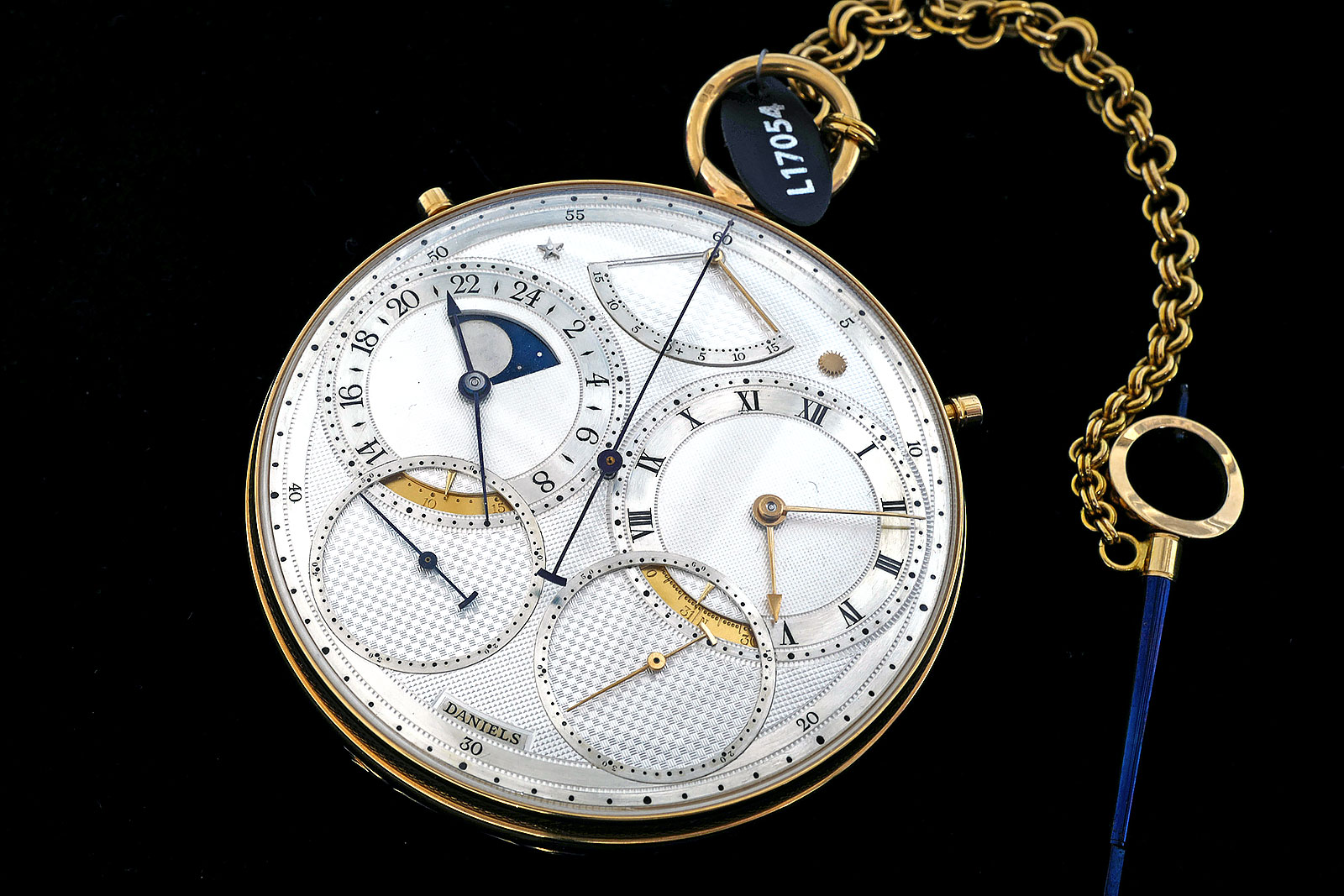
The equation of time is shown in the fan-shaped subdial at the top of the face, indicating the difference between mean solar time and actual solar time as the elliptical orbit of the Earth causes days to be shorter and longer than the 24 hours of mean solar time.
Despite the movement’s complexity, and the number of moving parts, there is symmetry and a elegant approach to the different horological complications contained within. To add to its complexity George fitted the watch with a chronograph function that could switch between the two gear trains for sidereal and mean solar time. To do this George fitted the watch with a horizontal clutch system (the top of which is visible just above the balance wheel). This was the precursor to George’s compact chronograph mechanism that would feature in two other later watches, including a wristwatch with chronograph and tourbillon.
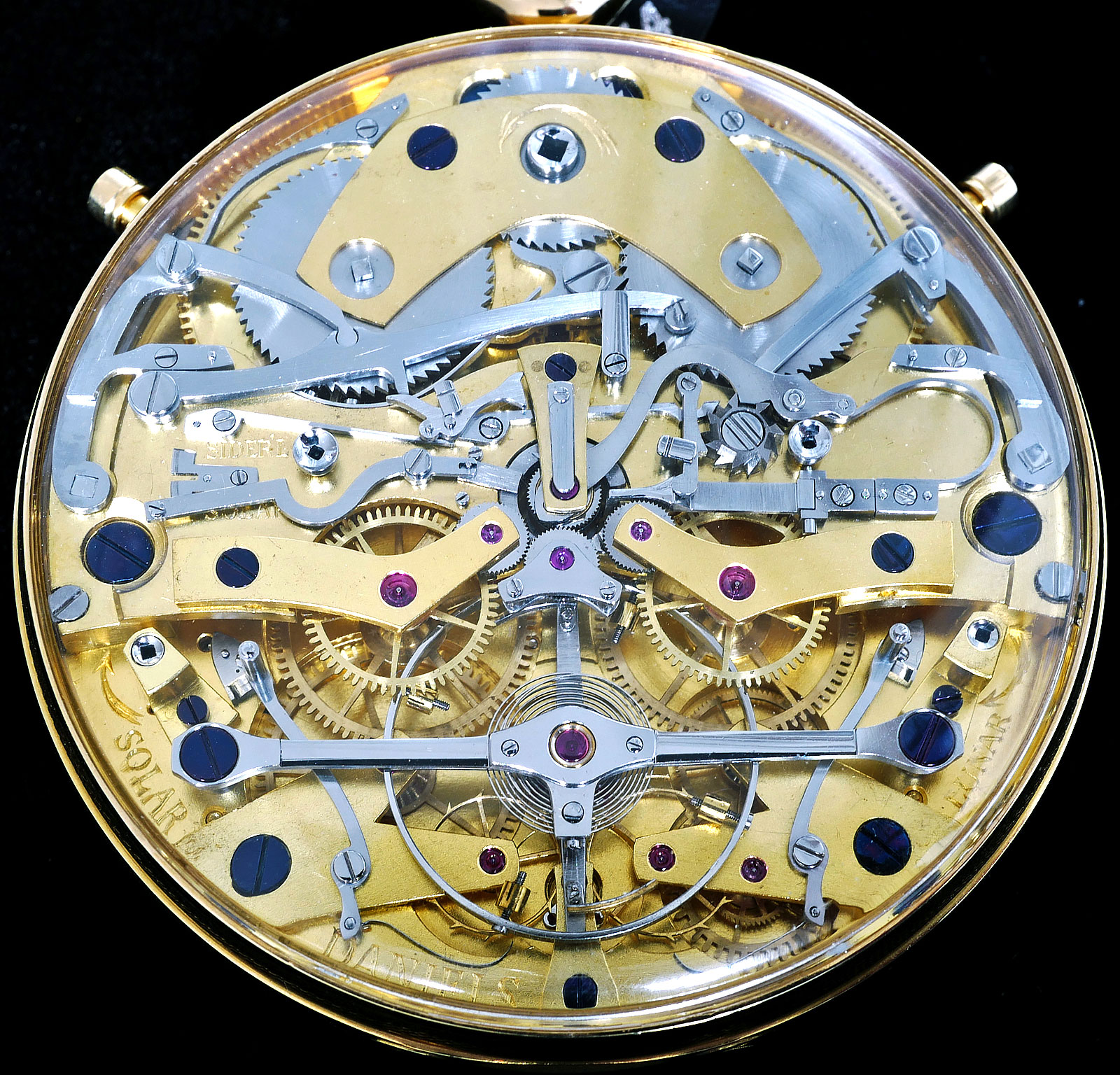
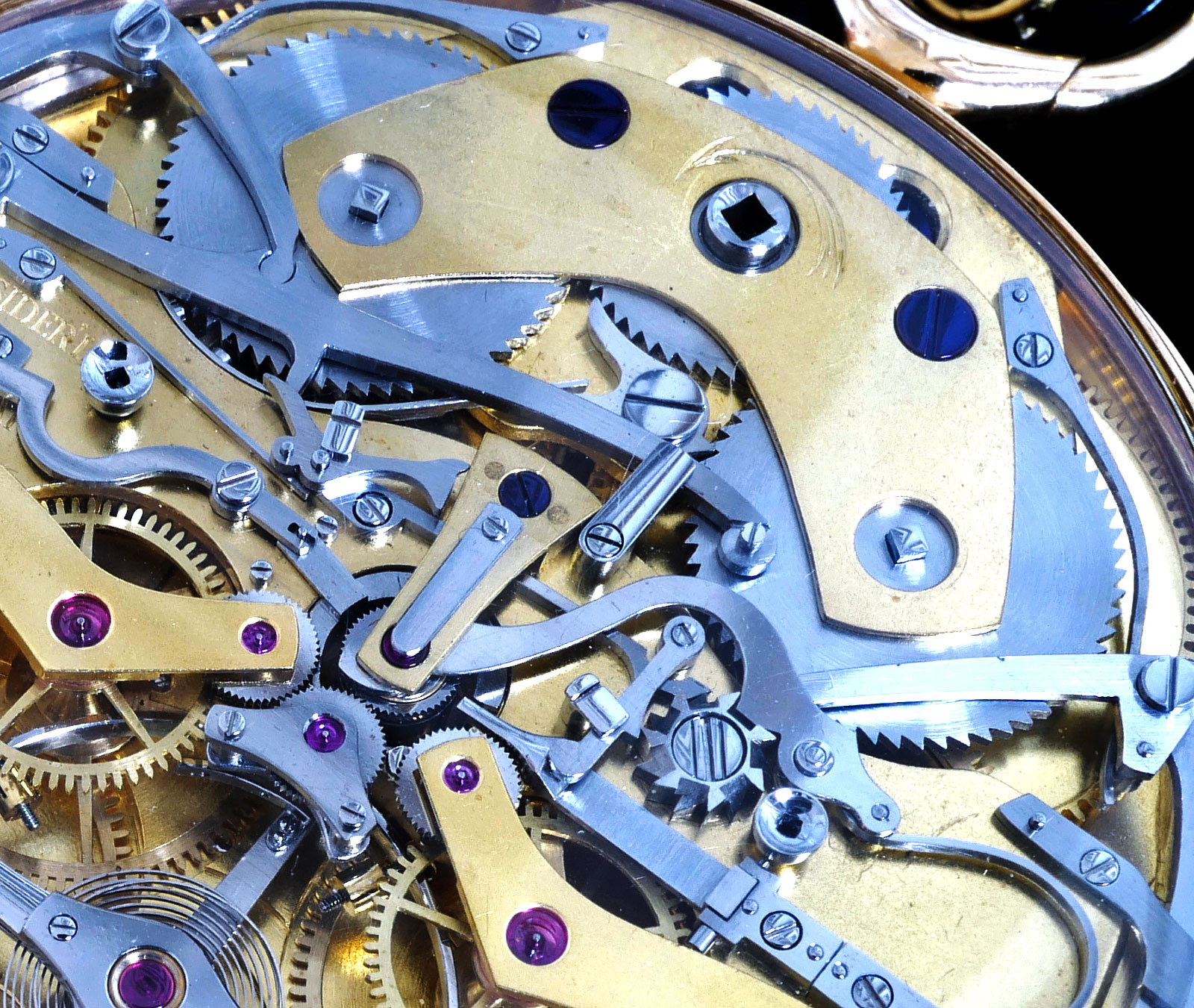
Taking a trip to Mars
The Space Traveller II really is one of those watches that just grabs you. It certainly had that effect on Daniels’ apprentice Smith when the latter first laid eyes on it as a student at the Manchester School of Horology. And that same factor entranced most people, whether interested in horology or not, every time they saw it. It is interesting to note that the Space Traveller II, unlike most of the other pocket watches Daniels made, had an exhibition back rather than a hinged, solid case. George wanted people to see what was inside.
George later said he “dined out” on the ability of the watch to switch between sidereal and mean solar because he could regale people with the idea that the watch was awfully useful if you were on your package tour to Mars; when calling back to Earth on a (really) long distance call, something extremely expensive in the mid 1980s, one could simply switch to sidereal time and cut the phone bill by 3.555 seconds a day.
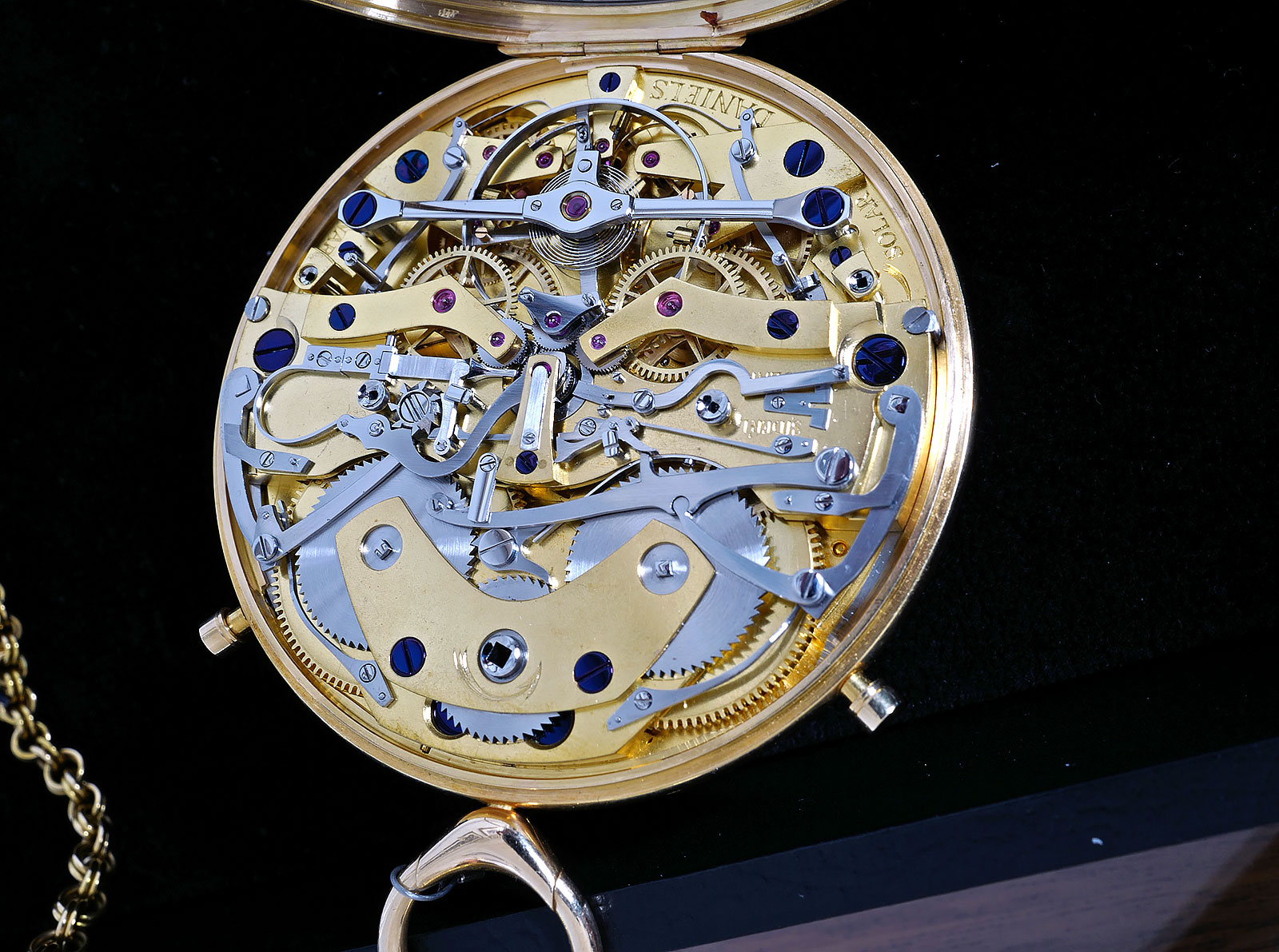
The watch itself has become a shining star of the horological world, a reputation cemented last September at Sotheby’s in London. Five years ago, at the sale of George’s estate at Sotheby’s, the Space Traveller II went through the stratosphere as it passed the £1m mark to become the most expensive English watch ever sold at auction. Fees included the Space Traveller II sold for £1.33m.
When it was first sold in 2012, Roger Smith was given the opportunity to service the watch; and it still showed when the watch went under the hammer last year, with the movement gleaming beneath the glazed back.
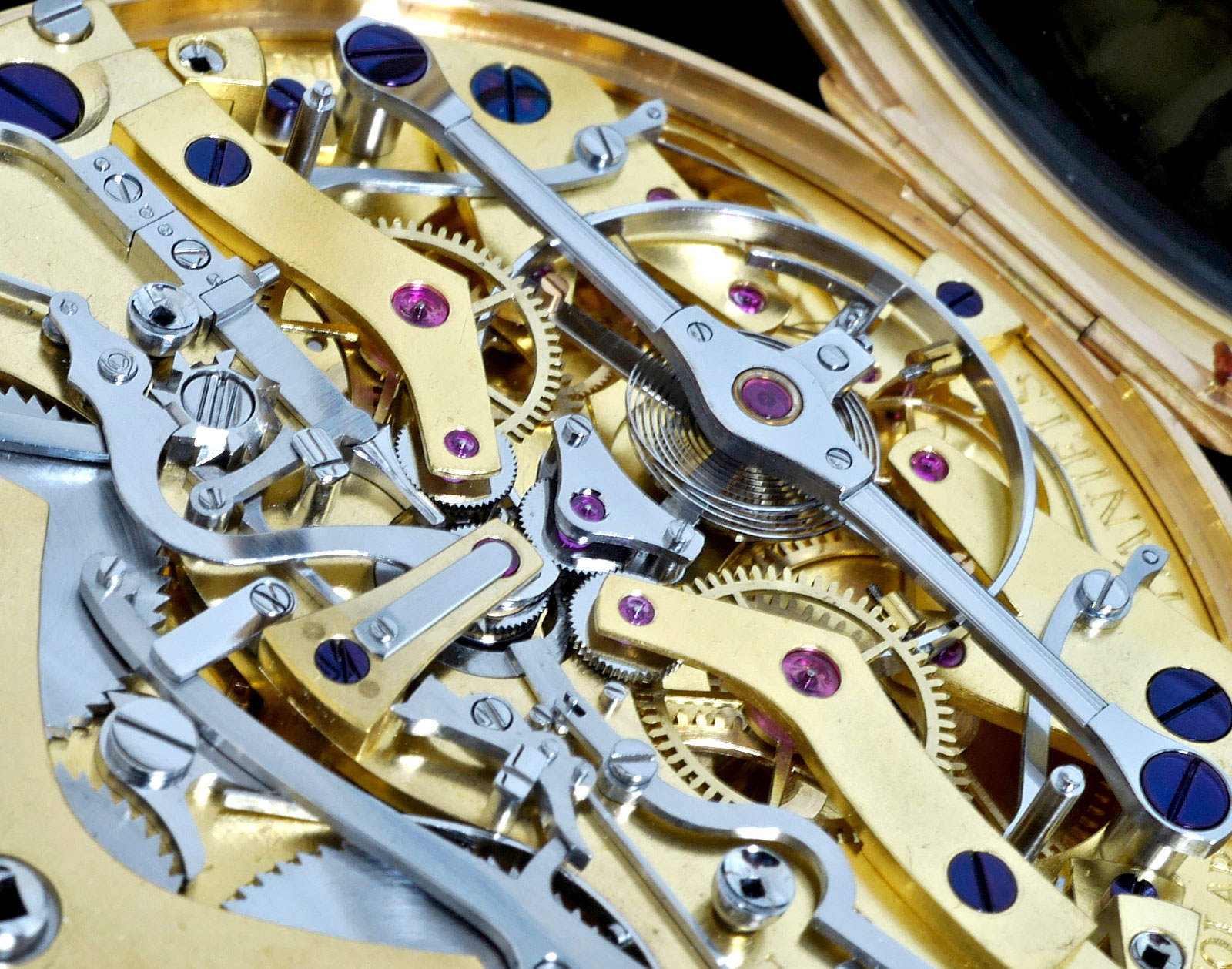
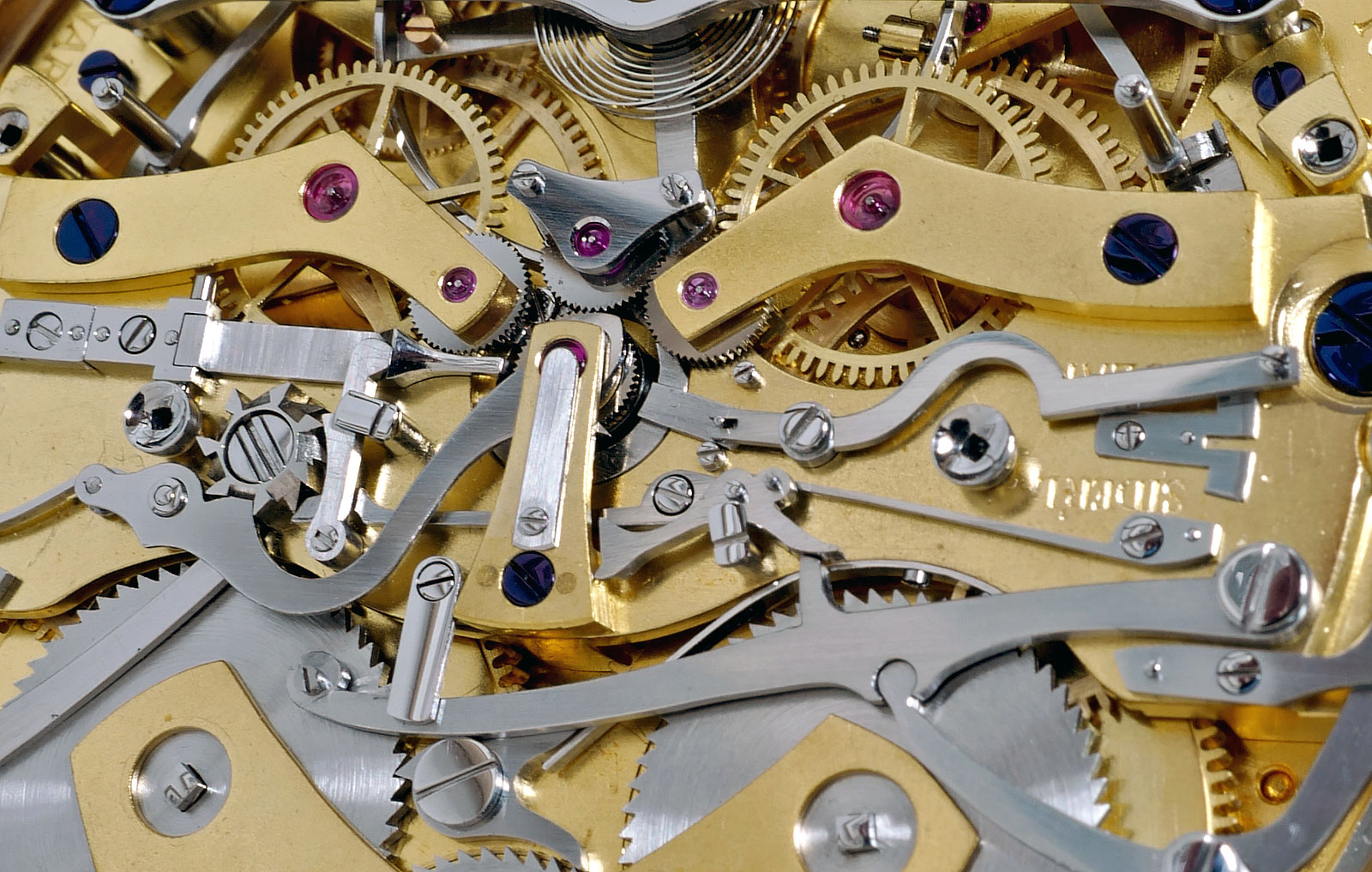
The price, when the gavel came down at Sotheby’s in September 2017, was just shy of £3.2m, or about US$4.32m, making it one of the most expensive timepieces of any kind ever sold. It went to a buyer in the sale room, bidding on behalf of the winner who is English, according to people in the know.
With that price, the Space Traveller II entered the pantheon of great collectible watches, putting it on par with the Patek Philippe Henry Super-Complication, the steel Patek Philippe ref. 1518, the Rolex ref. 6062 “Bao Dai”, and of course Paul Newman’s “Paul Newman” Daytona that is the most expensive watch ever.
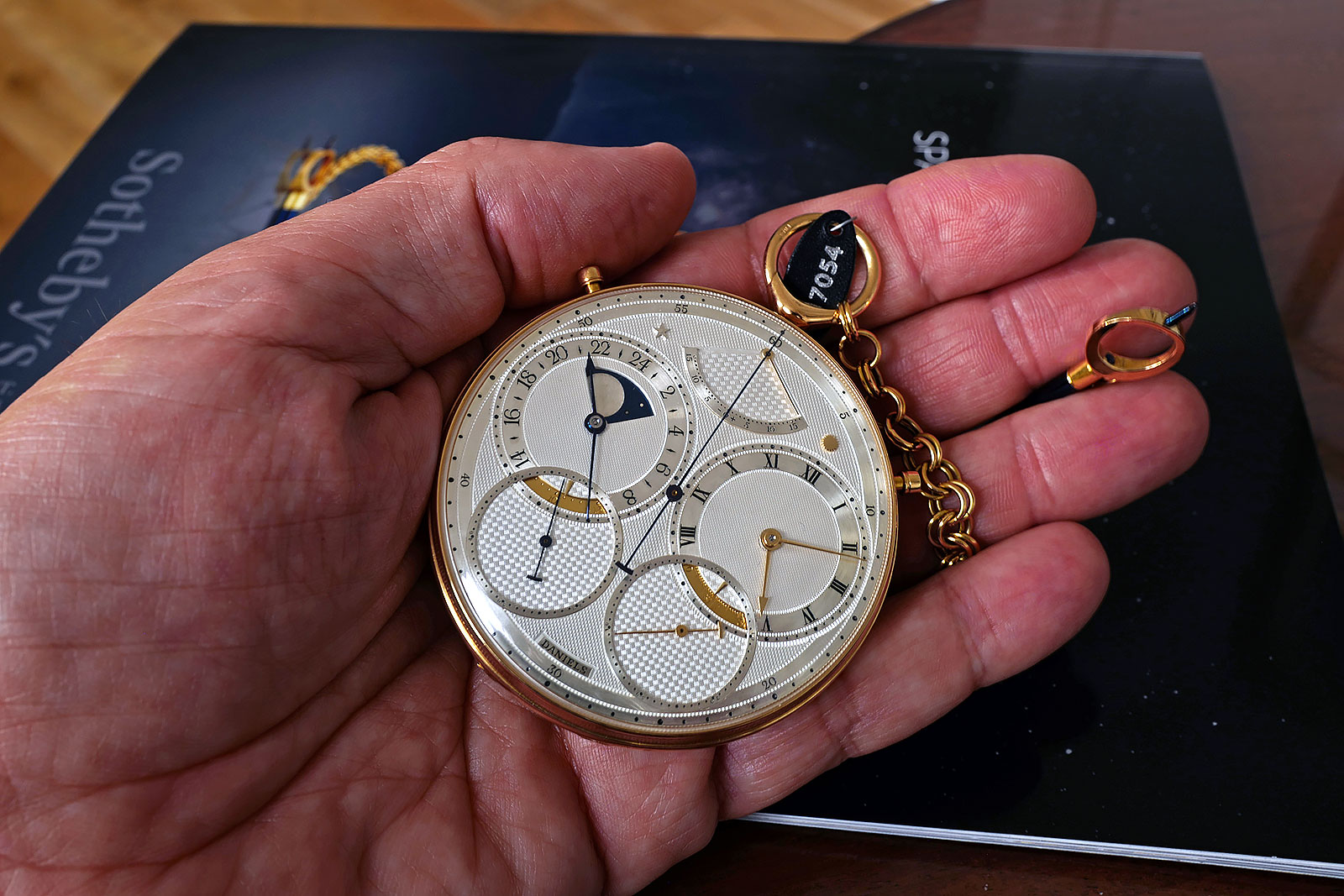
While there exist more valuable watches, in terms of horological content and history, the Space Traveller II is second to none. Michael Tay, who runs The Hour Glass, the largest watch retailer in South-East Asia, is a man who knows a thing or two about watches. He was the underbidder on the Space Traveller II, as he wrote on his Instagram account, saying that the watch was one of the “seven wonders” of watchmaking, alongside grand complication pocket watches like the Leroy 01 and Patek Philippe Calibre 89. I might quibble with some of the others on the list, but not with this watch.
Back to top.

